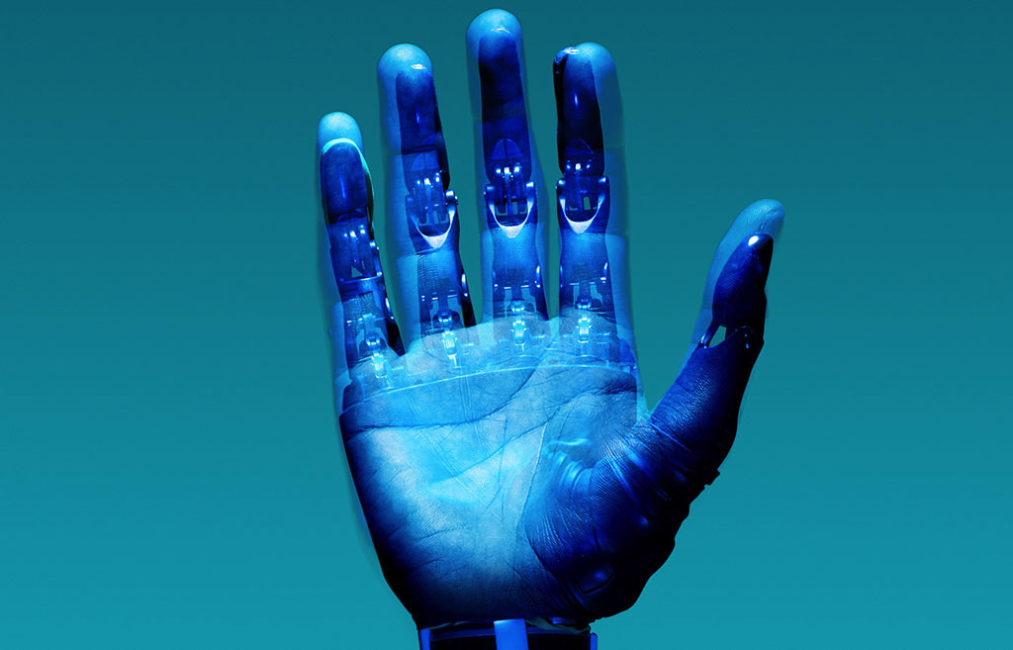Robotics for Human Resilience

Blog Post by Neil Jacobstein
mediaX Distinguished Visiting Scholar
The COVID-19 pandemic has revealed critical vulnerabilities in our society and placed a premium on humanity’s ability to be resilient under many types of adversity. The need to get physical work done remotely under social distancing conditions is one hallmark of resilient operations. Robotics can be framed as a useful set of tools for seamless extensions of our ability to do local work remotely. Robotics is about the ability to use machines to manipulate molecules and matter. Artificial intelligence is about the ability to do machine pattern recognition and problem solving, manipulating bits and information. These technologies reinforce each other, driving continuous improvement, increasing precision, and decreasing cost. In the context of a quarantine, this can enable continuity of work and maintenance of critical economic functions.
In spite of current limitations that will require additional research and development, robots have already been utilized in COVID-19 disinfection tasks, reducing the need for human workers to be exposed to highly infectious environments in hospitals or cruise ships. Robots have also reduced the need inside hospitals for people to perform all of the food and drug deliveries to patients. This could save lives.
Robots are being developed and tested for effectiveness at repetitive medical care procedures from taking temperatures, to monitoring vital signs, to collecting fluid samples, and ultrasound imaging to identify peripheral forearm veins for venipuncture1. Surgical assistant robots from Intuitive Surgical and other companies are already a proven successful industry2. These robots can augment human surgeons doing limited classes of surgery in an adjacent room isolated from an infected patent. There are many R&D opportunities available to improve medical care robots to make them more capable, humancentric, and cost effective.
Today’s coronavirus testing systems seem agonizingly slow. They are about to accelerate significantly with entirely new and considerably faster testing technologies. However, the current testing systems used worldwide that rely on PCR could not be accomplished without extensive laboratory robotics.
Many major international conferences have been cancelled in order to save lives by social distancing. Robots can serve to extend virtual meetings and conferences on Zoom, Skype, and high definition virtual reality environments. Users can explore physical devices, new products, and services by using avatar interfaces to mobile physical robots equipped with vision systems, and arm manipulators that enable visual examination of objects. These robotic avatars for humans are relatively primitive today, but monetary prize competitions like the $10M ANA Avatar XPRIZE3 will accelerate continuous improvement.
Robots have been deployed in loading and unloading trucks, doing pick and place operations, and enabling mobile inventory rack access in the Amazon warehouses and delivery centers. Robots are being used for delivering goods, such as groceries, prepared food from restaurants, and light hardware and electronics. On the one hand, these robots reduce the need for some types of human labor, but they also can decrease the risk of transmitting disease when used with sanitized packing methods.
Semi-autonomous drones have been deployed in Rwanda by the startup Zipline. These drones rapidly deliver blood and drugs matched to the specific needs of patients. The drones can operate in areas where dirt roads are easily washed out or highways are damaged4. Drone enabled access to blood, or the right drugs at the right time could make life or death differences to humans caught in the middle of a pandemic. As drone technology develops, lower noise, improved battery life, and inexpensive powerful brushless motors will enable these robots to be utilized routinely in congested urban areas.
Each of these robotic applications could simultaneously reduce the human burden of disease and our carbon footprint. Both of these outcomes will make our somewhat brittle society significantly more antifragile and resilient.
1. -Z. Yang, B. J. Nelson, R. R. Murphy, H. Choset, H. Christensen, S. H. Collins, P. Dario, K. Goldberg, K. Ikuta, N. Jacobstein, D. Kragic, R. H. Taylor, M. McNutt, Combating COVID-19—The role of robotics in managing public health and infectious diseases. Sci. Robot. 5, eabb5589 (2020).
2. https://www.intuitive.com/en-us
3. https://www.xprize.org/articles/77-teams-worldwide-advance-in-avatar-competition
 Neil Jacobstein chairs the Artificial Intelligence and Robotics Track at Singularity University. As a mediaX Distinguished Visiting Scholar, his research focuses on augmented decision systems. He has served as an AI technical consultant to leading business, government, and defense organizations. He is a Founding Editorial Board member of the American Association for the Advancement of Science’s (AAAS) Science Robotics journal. Jacobstein was appointed by the US National Academies of Sciences, Engineering, and Medicine to the Earth and Life Studies Committee for the period 2015-2021. He is serving in a variety of advisory roles for industry, startup, nonprofit, and government organizations.
Neil Jacobstein chairs the Artificial Intelligence and Robotics Track at Singularity University. As a mediaX Distinguished Visiting Scholar, his research focuses on augmented decision systems. He has served as an AI technical consultant to leading business, government, and defense organizations. He is a Founding Editorial Board member of the American Association for the Advancement of Science’s (AAAS) Science Robotics journal. Jacobstein was appointed by the US National Academies of Sciences, Engineering, and Medicine to the Earth and Life Studies Committee for the period 2015-2021. He is serving in a variety of advisory roles for industry, startup, nonprofit, and government organizations.